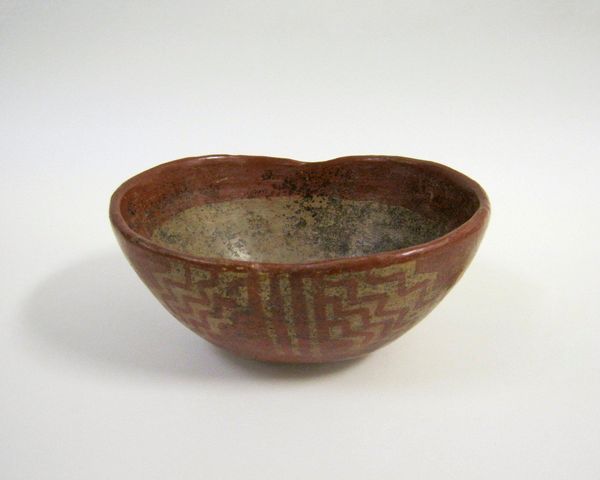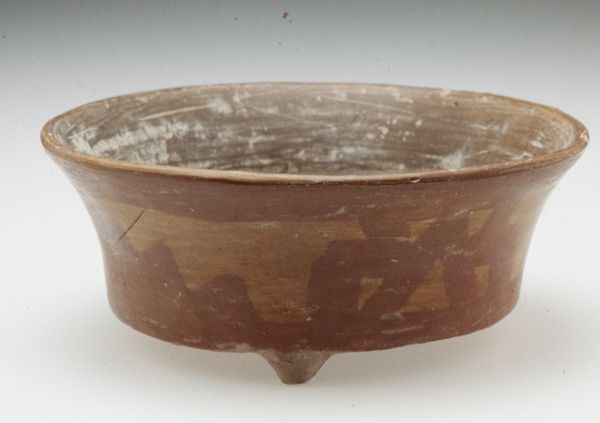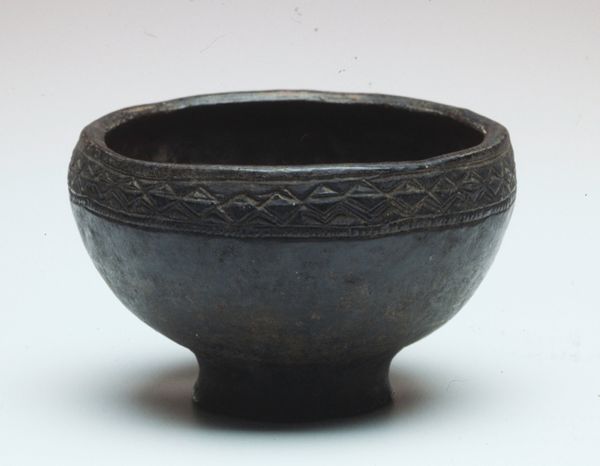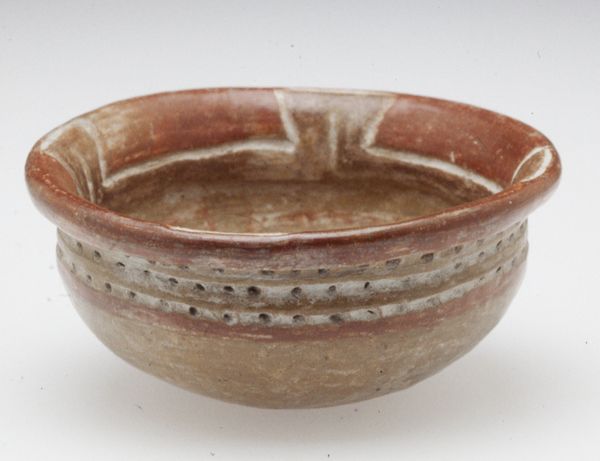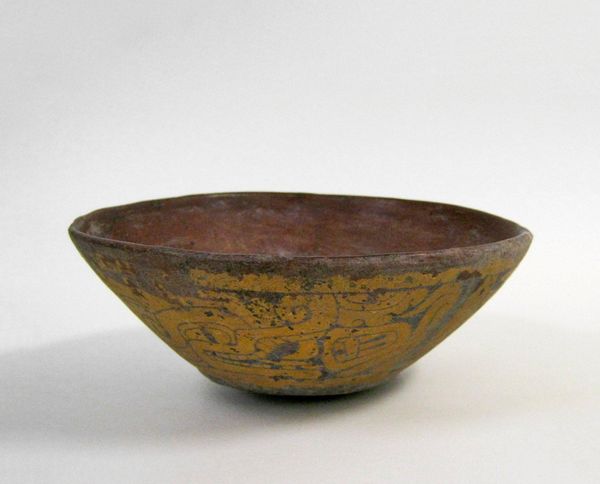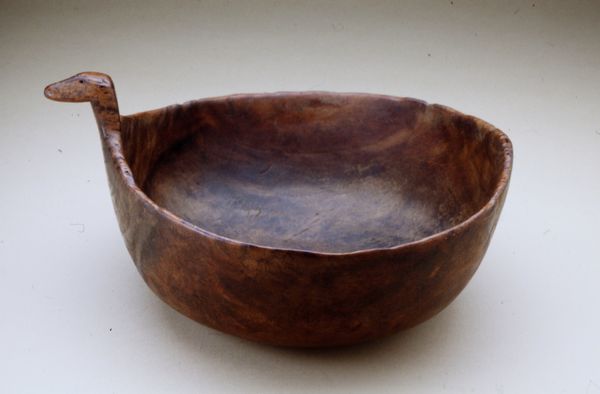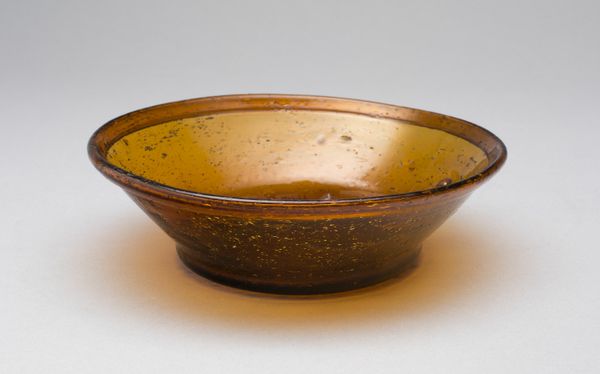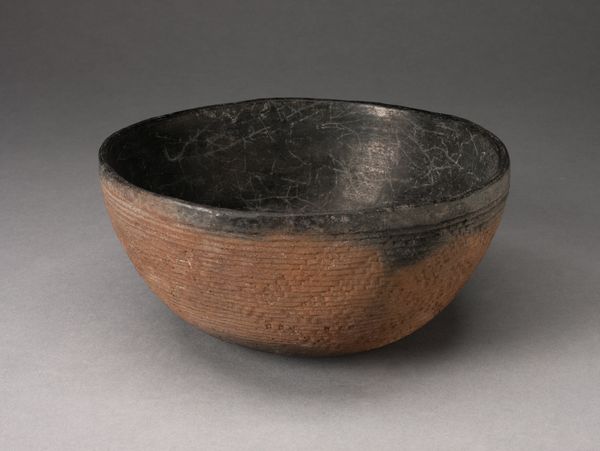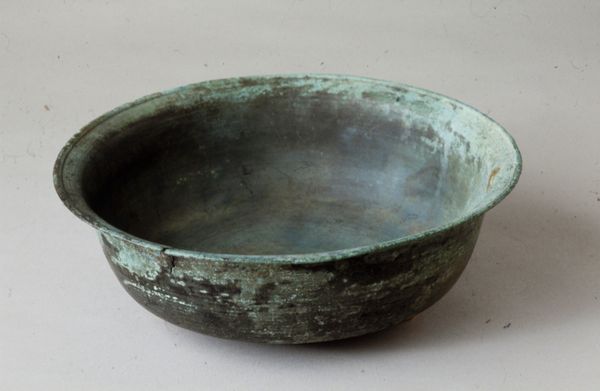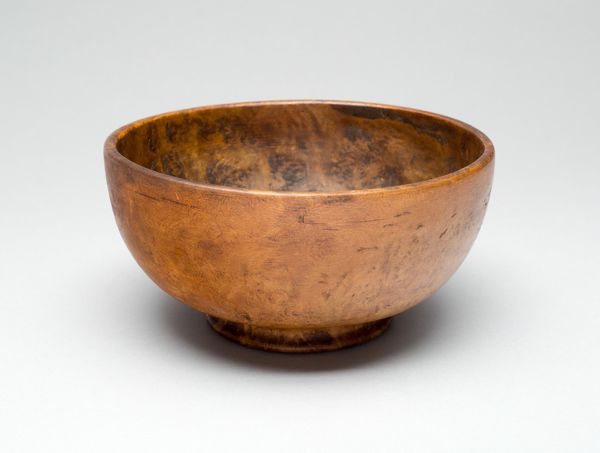
ceramic, earthenware, sculpture
#
ceramic
#
earthenware
#
stoneware
#
geometric
#
sculpture
Dimensions: 2 3/4 x 6 x 6 in. (7 x 15.2 x 15.2 cm)
Copyright: Public Domain
Curator: This vessel is a ceramic bowl, possibly earthenware, attributed to the Ngombe people, and estimated to date to the 20th century. You can find it here at the Minneapolis Institute of Art. Editor: It possesses an interesting solemnity. I see dark clay, almost black in its depth, marked with geometric incisions. What do you make of it? Curator: To me, the etched lines embody echoes of ancestral designs; they're not merely decorative. They whisper of lineage, of the ongoing story of the Ngombe culture expressed in tangible form. Perhaps a link to cosmologies. Editor: I agree about lineage. Look at the method of its construction – likely coil-built and then burnished, judging by the surface. This suggests knowledge passed down through generations. It makes you wonder about the potter: her role within the community, the access to resources, even the time commitment involved in its making. Curator: Consider also the bowl’s potential function: did it contain sustenance, spiritual elements, or perhaps serve a ceremonial role within their society? Vessels hold much more than meets the eye. They carry both practical and symbolic resonance. Editor: Precisely! I'm particularly drawn to that rim of indents—possibly to support a cover of some kind. Each groove feels significant when we imagine the fingers of the artisan repeatedly making the same movements, repeating the tradition. What would this object have been bartered or traded for, I wonder? Curator: Its minimalist beauty underscores something deeply rooted. The Ngombe believed that objects could retain energy. Therefore, I see a humble utilitarian container imbued with the very essence of the past and its place within the community. Editor: A profound observation. It really challenges this false hierarchy between the so-called 'fine arts' and quotidian crafts, doesn't it? The Bowl holds meaning within every facet of its construction, its place and usage as much as what it is made from.
Comments
No comments
Be the first to comment and join the conversation on the ultimate creative platform.
